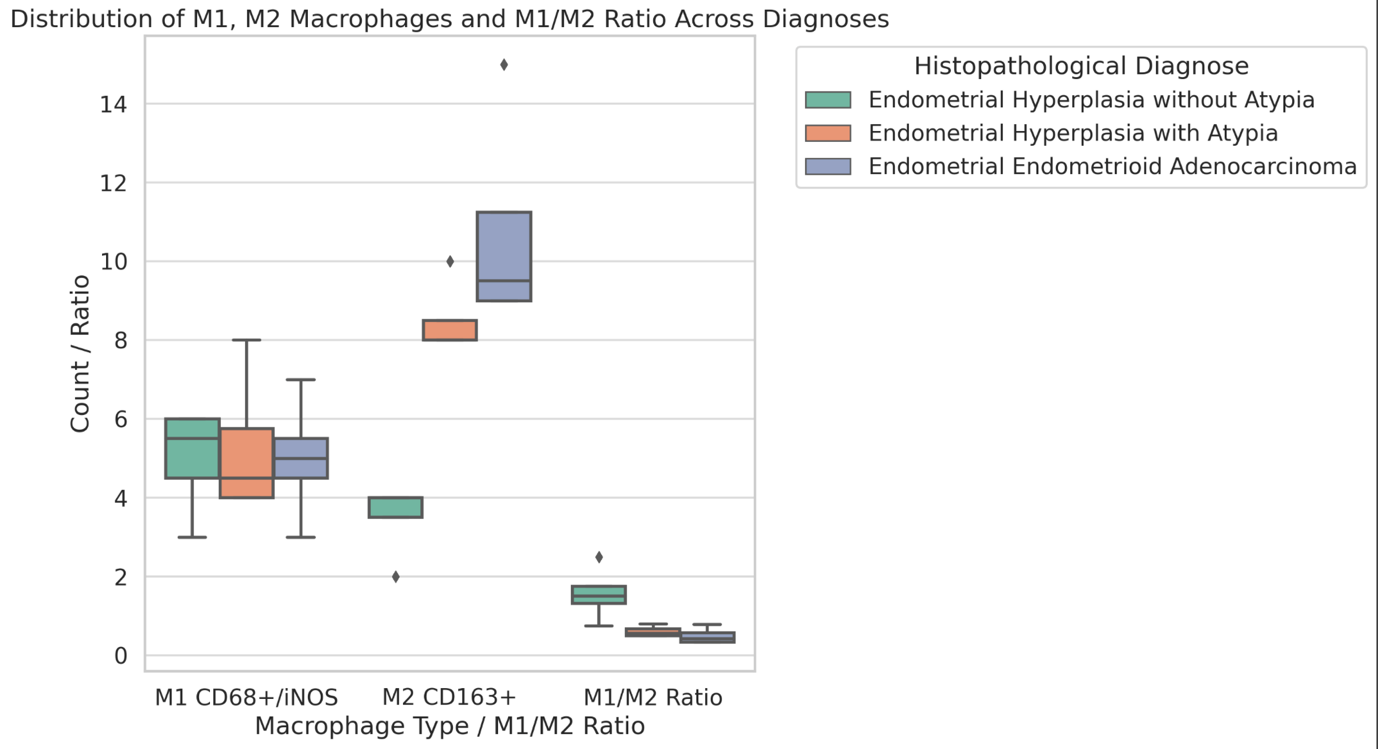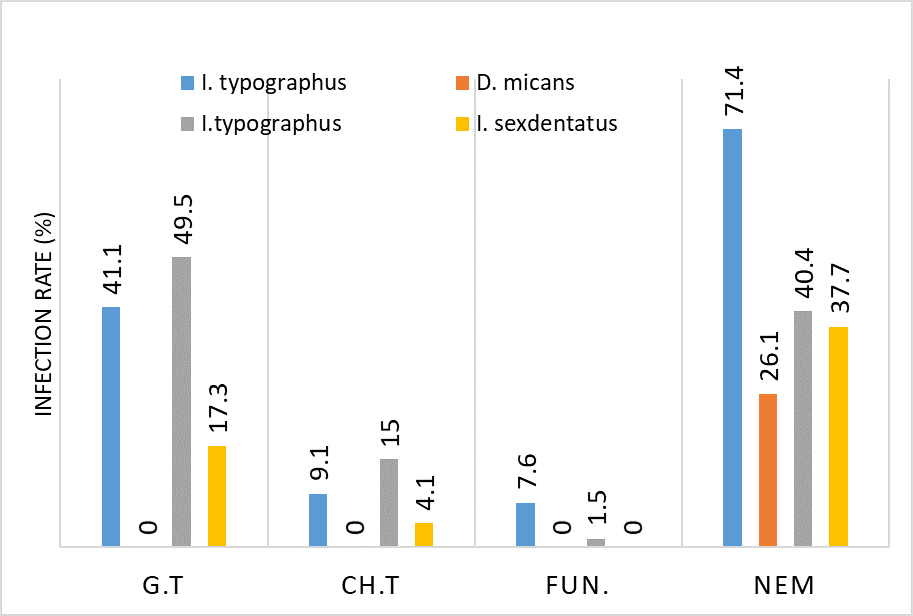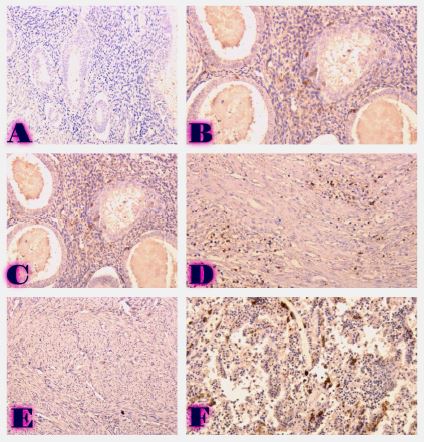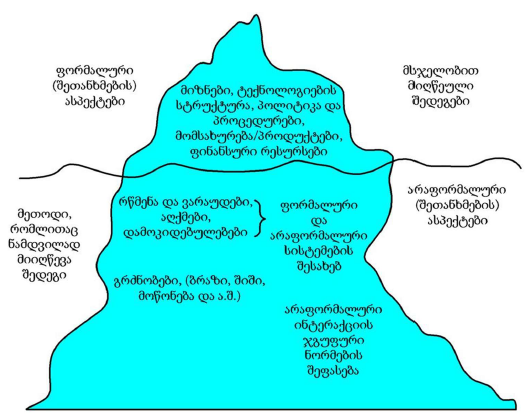Concept for creating sunscreen cosmetics
Downloads
The article examines a number of compounds with UV protective activity. Literature data on the use of organic synthetic compounds, mainly benzophenones, including dioxybenzone, sulisobenzone, oxybenzone and avobenzone, as well as cinnamates, salicylates, and PABA derivatives are described. It has been shown that, along with UV-protective activity, they also have side effects that are very harmful to the body. It is more advisable to use natural organic compounds. The possibility of using free fatty acids, their mono- and diglycerides and triglycerides is discussed in detail and justified. They contain certain amounts of lipids, carotenoids, flavonoids, polyphenols, phospholipids, free sterols, tocopherols and tocotrienols, triterpene alcohols, hydrocarbons, carotenoids, fat-soluble vitamins and a number of other compounds that exhibit activity against solar radiation. A similar effect is also considered when using essential oils oils. Along with similar activity, oils are used as promoters of the penetration of active substances through the skin and stratum corneum. When acids are applied to the skin, its permeability increases and the content of certain substances contained in medicinal and cosmetic forms for topical use increases in the lower layers of the skin. The data presented indicate the advisability of using organic acids.
Downloads
Metrics
Di Nardo, J.C., Downs, C.A. Dermatological and environmental toxicological impact of the sunscreen ingredient oxybenzone/benzophenone-3. J. Cosmet. Dermatol. 2018, 17, 15–19.
Murali K Matta , Jeffry Florian, Robbert Zusterzeel , Nageswara R Pilli , Vikram Patel et al. Effect of Sunscreen Application on Plasma Concentration of Sunscreen Active Ingredients: A Randomized Clinical Trial. JAMA. 2020 Jan 21;323(3):256-267.
Klimova Z., Hojerova J., Beránkova M. Skin absorption and human exposure estimation of three widely discussed UV filters in sunscreens–In vitro study mimicking real-life consumer habits. Food Chem. Toxicol. 2015, 83, 237–250.
Joensen U.N., Jorgensen, N., Thyssen J.P., Petersen J.H. Exposure to phenols, parabens and UV filters: Associations with loss-of-function mutations in the filaggrin gene in men from the general population. Environ. Int. 2017, 105, 105–111.
Broniowska Z., Slusarczyk J., Starek-Swiechowicz B., Trojan E. et al. The effect of dermal benzophenone-2 administration on immune system activity, hypothalamic-pituitary-thyroid axis activity and hematological parameters in male Wistar rats. Toxicology 2018, 1, 1–8.
Huo W., Cai P., Chen M., Li, H., Tang, J., et al. The relationship between prenatal exposure to BP-3 and Hirschsprung’s disease. Chemosphere 2016, 144, 1091–1097.
DiNardo J.C., Downs C.A. Can oxybenzone cause Hirschsprung’s disease. Reprod. Toxicol. 2019, 86, 98–100.
Alamer M., Darbre P.D. Effects of exposure to six chemical ultraviolet filters commonly used in personal care products on motility of MCF-7 and MDA-MB-231 human breast cancer cells in vitro. J. Appl. Toxicol. 2018, 38, 148–159.
Pollack A.Z., Buck Louis G.M., Chen Z., Sun L., et al. Benzophenone-type ultraviolet filters, and phthalates in relation to uterine leiomyoma. Environ. Res. 2015, 137, 101–107.
Phiboonchaiyanan P.P., Busaranon K., Ninsontia C., Chanvorachote P. Benzophenone-3 increases metastasis potential in lung cancer cells via epithelial to mesenchymal transition. Cell Biol. Toxicol. 2017, 33, 251–261.
Broniowska Z., Slusarczyk J., Starek-Swiechowicz B., Trojan E.. et al. The effect of dermal benzophenone-2 administration on immune system activity, hypothalamic-pituitary-thyroid axis activity and hematological parameters in male Wistar rats. Toxicology 2018, 1, 1–8.
. Krzyzanowska W., Pomierny B., Starek-Swiechowicz B., Broniowska Ż., et al. The effects of benzophenone-3 on apoptosis and the expression of sex hormone receptors in the frontal cortex and hippocampus of rats. Toxicol. Lett. 2018, 296, 63–72.
Rachel D Zamoiski , D Michal Freedman , Martha S Linet , Cari M Kitahara , et al. Prospective study of ultraviolet radiation exposure and risk of breast cancer in the United States. Environ Res, 2016 ;151:419-427.
Anastasia Kariagina, Elena Morozova, Reyhane Hoshyar, Mark D. Aupperlee, et al.Benzophenone-3 promotion of mammary tumorigenesis is diet-dependent. Oncotarget. 2020 ; 11(48): 4465–4478.
Franco Scinicariello, Melanie C. Buser. Serum Testosterone Concentrations and Urinary Bisphenol A, Benzophenone-3, Triclosan, and Paraben Levels in Male and Female Children and Adolescents: NHANES 2011–2012. Environ Health Perspect. 2016, 12;124(12):1898-1904.
Weronika Wnuk, Klaudia Michalska, Anna Krupa, Krystyna Pawlak.
Benzophenone-3, a chemical UV-filter in cosmetics: is it really safe for children and pregnant women? Postepy Dermatol Alergol. 2022, 2, 39(1): 26–33.
Ivana Klopcic, Marija Sollner Dolenc .Endocrine Activity of AVB, 2MR, BHA, and Their Mixtures. Toxicol Sci. 2017, 3 ;156(1):240-251.
Dana Seidlová-Wuttke , Julie Christoffel, Guillermo Rimoldi, Hubertus Jarry, Wolfgang Wuttke. Comparison of effects of estradiol with those of octylmethoxycinnamate and 4-methylbenzylidene camphor on fat tissue, lipids and pituitary hormones. Toxicol Appl Pharmacol. 2006 Jul 1;214(1):1-7.
Karak, N. (2012) Vegetable Oils and Their Derivatives. Vegetable Oil-Based Polymers, Cambridge, 2012, Chapter 3, 54-95.
Kostik V., Memeti S., Bauer B. Fatty acid composition of edible oils and fats. J. Hyg. Eng. Des. 2013;4:112–116.
Huang Ch., Freter C. Lipid metabolism, apoptosis and cancer therapy. Int. J. Mol. Sci. 2015;16:924–949.
Simmons G.E., Pruitt W.M., Pruitt K. Diverse roles of SIRT1 in cancer biology and lipid metabolism. Int. J. Mol. Sci. 2015;16:950–965.
Bozza P.T., Viola J.P.B. Lipid droplets in inflammation and cancer. Prostaglandins Leukot. Essent. Fat. Acids. 2014; 90:159–167.
Boris Rodenak-Kladniew , German Islan , Margarita de Bravo , Nelson Durán , Guillermo R Castro. Design, characterization and in vitro evaluation of linalool-load ed solid lipid nanoparticles as potent tool in cancer therapy . Colloids Surf B Biointerfaces, 2017 ,1;154 р. 123-132.
Chiara Brignole, Fabio Pastorino. Special Issue “Recent Advances in Precision Nanomedicine for Cancer”. Molecules. 2020 Sep; 25(18): 4148. tings
Mithun Rudrapal, Ashwini K. Mishra, Laxmi Rani, Khomendra K. Sarwa.
Nanodelivery of Dietary Polyphenols for Therapeutic Applications. Journals Molecules 2017, Volume 27, Issue 24, р. 124-135.
Chanchal Deep Kaur, Swarnlata Saraf. In vitro sun protection factor determination of herbal oils used in cosmetics. Pharmacognosy Res. 2010 Jan;2(1):22-5.
Janaky Ranjithkumar, Akhila Sameesh, Hari Ramakrishnan, K. Kaleesuwari .Sun Screen Efficacy of Punica granatum (Pomegranate) andCitrullus colocynthis (Indrayani) Seed Oils. International Journal of Advanced Research in Biological Sciences. 2016, V. 3, Issue 10,р. 198-206.
Milad El Riachy, Athar Hamade, Rabih Ayoub, Faten Dandachi, Lamis Chalak. Oil Content, Fatty Acid and Phenolic Profiles of Some Olive Varieties Growing in Lebanon. J.Frontiers in Nutrition. 2019, Volume 8, Issue 3, Pages: 1075-1080.
Manisha Pralhad Sutar Chaudhari Sanjay Ravindra. Screening of in vitro sun protection factor of some medicinal plant extracts by ultraviolet spectroscopy method. Journal of Applied Biology & Biotechnology. 2020, Vol. 8(6), pp. 48-53.
Lin, TK; Zhong, L.; Santiago, J.L. Anti-inflammatory effects and restoration of the skin barrier with topical application of certain vegetable oils. International J. Mol. Scientific, 2018, 19, 70-76.
Ana Jesus, Emília Sousa, Maria T. Cruz, Isabel F. Almeida. UV Filters: Challenges and Prospects. Journals Pharmaceuticals, 2022,Volume 15, Issue 3, 263- 269.
Еssential oils for sunburn. https://www.medicalnewstoday.com › article.
Lin T.-K., Zhong, L., Santiago J. L. J. Anti-Inflammatory and Skin Barrier Repair Effects of Topical Application of Some Plant Oils. Int. J. Mol. Sci. 2018, 19 (1), 70- 77.
Chen Y., Quan P., Liu X., Wang M., Fang L. Novel Chemical Permeation Enhancers for Transdermal Drug Delivery. Asian J. Pharm. Sci. 2014, 9 (2), 51–64.
Kováčik A., Kopečná M., Vávrová K. Permeation Enhancers in Transdermal Drug Delivery: Benefits and Limitations. Expert Opin Drug Deliv 2020, 17 (2), 145–155.
Sarah A. Ibrahim, S. Kevin Li. Efficiency of Fatty Acids as Chemical Penetration Enhancers: Mechanisms and Structure Enhancement Relationship. Pharm Res. 2010 Jan; 27(1): 115–125.
Philip W. Wertz. Lipids and the Permeability and Antimicrobial Barriers of the Skin . J. Lipids. 2018, (9), 5954034.
Chantasart D., Sa-Nguandeekul P., Prakongpan S., Li S.K., Higuchi W.I. Comparison of the effects of chemical permeation enhancers on the lipoidal pathways of human epidermal membrane and hairless mouse skin and the mechanism of enhancer action. J Pharm Sci. 2007,96:2310–26.
Ibrahim SA, Li SK. Effects of chemical enhancers on human epidermal membrane: Structure-enhancement relationship based on maximum enhancement Emax. J Pharm Sci. 2009,98:926–44.
Karande P, Jain A, Mitragotri S. Insights into synergistic interactions in binary mixtures of chemical permeation enhancers for transdermal drug delivery. J Control Release. 2006,115:85–93.
Ibrahim SA, Li SK. Effects of solvent deposited enhancers on transdermal permeation and their relationship with Emax. J Control Release. 2009,136:117–24.
Ashu Mittal , S. Sara, Asgar Ali, Mohd Aqil. Status of fatty acids as skin penetration enhancers-a review. Curr Drug Deliv . 2009 Jul;6(3):274-9.
Adrian C Williams, Brian W Barry. Penetration enhancers.Advanced Drug Delivery Reviews. Volume 56, Issue 5, 2004, P. 603-611.
Marchev A. S., Georgiev M. I. Plant In Vitro Systems as a Sustainable Source of Active Ingredients for Cosmeceutical Application. Molecules 2020, 25 (9), 200- 219.
Thakur D., Kaur G., Puri A., Nanda R. Therapeutic Potential of Essential Oil-Based Microemulsions: Reviewing State-of-the-Art. Curr. Drug Deliv 2021, 18 (9), 1218– 1233.
Čuříková-Kindlová B. A., Vovesná A., Nováčková A., Zbytovská J. In Vitro Modeling of Skin Barrier Disruption and Its Recovery by Ceramide-Based Formulations. AAPS PharmSciTech 2022, 23 (1), 21-30.
Vovesná A., Zhigunov A., Balouch M., Zbytovská J. Ceramide Liposomes for Skin Barrier Recovery: A Novel Formulation Based on Natural Skin Lipids. Int. J. Pharm. 2021, 596, 120264
Draelos Z., Baalbaki N., Cook, S., Raab S., Colón, G. The Effect of a Ceramide-Containing Product on Stratum Corneum Lipid Levels in Dry Legs. Journal of Drugs in Dermatology 2020, 19 (4), 372– 376.
Huth S., Schmitt L., Marquardt Y., Heise R. et al. Effects of a Ceramide-Containing Water-in-Oil Ointment on Skin Barrier Function and Allergen Penetration in an IL-31 Treated 3D Model of the Disrupted Skin Barrier. Exp Dermatol 2018, 27 (9), 1009– 1014.
Matsuoka M., Okoshi K., Ito S., Kume T. et al. Efficacy of Heparinoid Cream Containing Pseudo-Ceramide for Remission of Atopic Dermatitis. Clin Cosmet Investig Dermatol 2021, 14, 1839– 1847.
Choi S. M., Lee B.-M. Safety and Risk Assessment of Ceramide 3 in Cosmetic Products. Food Chem. Toxicol. 2015, 84, 8– 17.
Tamura E., Ishikawa J., Yasuda Y., Yamamoto T. The Efficacy of Synthetic Pseudo-ceramide for Dry and Rough Lips. Int. J. Cosmet Sci. 2021, 43 (2), 158– 164.
Fox L. T., Gerber M., Plessis J. Hamman, J. H. Transdermal Drug Delivery Enhancement by Compounds of Natural Origin. Molecules 2011, 16 (12), 10507– 10540.
Sarkic A., Stappen I. Essential Oils and Their Single Compounds in Cosmetics-A Critical Review. Cosmetics 2018, 5 (1), 11- 17.
Saporito F., Sandri G., Bonferoni M. C., Rossi S. et al. Essential Oil-Loaded Lipid Nanoparticles for Wound Healing. Int. J. Nanomedicine 2018, 13, 175– 186.
Çalışkan UK, Karakuş MM. Essential Oils as Skin Permeation Boosters and Their Predicted Effect Mechanisms. J Dermatol & Skin Sci. 2020, 2(3):24-30
Qiudong Jiang, Yeming Wu, Hui Zhang, Pei Liu et al. Development of essential oils as skin permeation enhancers: penetration enhancement effect and mechanism of action. Pharm Biol. 2017, 55(1): 1592–1600.
Fox L.T., Gerber M., Plessis J.D., Hamman J.H. Transdermal drug delivery enhancement by compounds of natural origin. Molecules. 2011,16:10507–10540.
Herman A., Herman A.P. Essential oils and their constituents as skin penetration enhancer for transdermal drug delivery: A review. J. Pharm. Pharmacol. 2014, 67:473–485.
Akbari J., Saeedi M., Farzin D., Morteza-Semnai K., Esmaili Z. Transdermal absorption enhancing effect of the essential oil of Rosmarinus officinalis on percutaneous absorption of Na diclofenac from topical gel. Pharm. Biol. 2015, 53:1442–1447.
Valgimigli L., Gabbanini S., Berlini E., Lucchi E. et al. Lemon (Citrus limon, Burm.f.) essential oil enhances the trans-epidermal release of lipid- (A, E) and water- (B6, C) soluble vitamins from topical emulsions in reconstructed human epidermis. Int J Cosmet Sci. 2012 Aug, 34(4):347–356.
Ruan S., Wang Z., Xiang S. et al. Mechanisms of white mustard seed (Sinapis alba L.) volatile oils as transdermal penetration enhancers. Fitoterapia. 2019 Oct., 138:104195.
Lan Y., Wu Q., Mao Y.-Q. et al. Cytotoxicity and enhancement activity of essential oil from Zanthoxylum bungeanum Maxim. as a natural transdermal penetration enhancer. J. Zhejiang Univ Sci B. 2014, 15(2): 153-164.
Rahul M. Varman , Somnath Singh. Investigation of Effects of Terpene Skin Penetration Enhancers on Stability and Biological Activity of Lysozyme. AAPS PharmSciTech. 2012 Dec; 13(4): 1084–1090.
Takayuki Furuishi, Yukiko Kato, Toshiro Fukami. Effect of Terpenes on the Skin Permeation of Lomerizine Dihydrochloride. Journal of Pharmacy & Pharmaceutical Sciences, 2013, 16(4):551-563.
Ashraf Direkvand-Moghadam, Afra Khosravi.Epidemiology of Female Infertility; A Review of Literature Biosciences Biotechnology Research Asia, 2013,10(2):559-567
Zhu XF., Luo J., Guan YM. Effects of Frankincense and Myrrh essential oil on transdermal absorption in vitro of Chuanxiong and penetration mechanism of skin blood flow. Zhongguo Zhong Yao Za Zhi. 2017, 42(4): 680-685.
Li Y., Yao JH., Shu YT. Comparative study of penetrationenhancing effect in vitro of cinnamon oil and cinnamaldehyde on ibuprofen. ZhongguoZhong Yao Za Zhi. 2018, 43(17): 3493-3497.
Akbari J., Saeedi M., Farzin D. Transdermal absorption enhancing effect of the essential oil of Rosmarinus officinalis on percutaneous absorption of Na diclofenac from topical gel. Pharm Biol. 2015, 53(10): 1442-1447.
Khan NR., Khan GM., Wahab A. et al. Formulation, and physical, in vitro and ex vivo evaluation of transdermal ibuprofen hydrogels containing turpentine oil as penetration enhancer. Pharmazie. 2011 Nov, 66(11):849-52.
Shen T., Xu H., Weng W. Development of a reservoir-type transdermal delivery system containing eucalyptus oil for tetramethylpyrazine. Drug Deliv. 2013, 20(1): 19-24.
Das A., Ahmed AB. Formulation and evaluation of transdermal patch of indomethacin containing patchouli oil as natural penetration enhancer. Asian J Pharm Clin Res. 2017, 10(11): 320-325.
Matsumoto Y., Ma S., Tominaga T., Yutaka Matsumoto, Sihui Ma et al. Acute effects of transdermal administration of jojoba oil on lipid metabolism in mice. Medicina. 2019, 55(9): 594.
Sharmeen J. B., Mahomoodally F. M., Zengin G., Maggi F. Essential Oils as Natural Sources of Fragrance Compounds for Cosmetics and Cosmeceuticals. Molecules 2021, 26 (3), 666-
Poljšak, N., Kreft, S., Kočevar Glavač, N. Vegetable Butters and Oils in Skin Wound Healing: Scientific Evidence for New Opportunities in Dermatology. Phytotherapy Research 2020, 34 (2), 254 – 269.
Tran Dang Xuan, Gu Gangqiang, Truong Ngoc Minh, Tran Ngoc Quy et al. An Overview of Chemical Profiles, Antioxidant and Antimicrobial Activities of Commercial Vegetable Edible Oils Marketed in Japan. Foods. 2018 Feb, 7(2): 22-29.
Styrczewska M., Zuk M., Boba A., Zalewski I., Kulma, A. Use of Natural Components Derived from Oil Seed Plants for Treatment of Inflammatory Skin Diseases. Curr. Pharm. Des., 2019, 25, 2241–2263.
Poljšak N., Kočevar Glavač N. Tilia Sp. Seed Oil-Composition, Antioxidant Activity and Potential Use. Appl. Sci. ,2021,11, 4932 -4943.
Poljšak N., Kreft S., Kočevar Glavač N. Vegetable Butters and Oils in Skin Wound Healing: Scientific Evidence for New Opportunities in Dermatology. Phytotherapy Res., 2019,34, 254–269.
Desai A.S. Coconut Oil: The Future of Atopic Dermatitis Treatment? Dermatol. Ther., 2017 Mar.,30(2), 12472.
Shweta Kajjari, Riddhi S Joshi, Shivayogi M Hugar, Niraj Gokhale, et al. The Effects of Lavender Essential Oil and its Clinical Implications in Dentistry .Int J Clin Pediatr Dent. 2022 May-Jun; 15(3): 385–388.
Natália Čmiková, Lucia Galovičová, Marianna Schwarzová, Milena D. Vukic, et al.
Chemical Composition and Biological Activities of Eucalyptus globulus Essential Oil. Plants (Basel). 2023 Mar; 12(5): 1076.
Mursleen Yasin, Adnan Younis, Talha Javed, Ahsan Akram et al. Tea Tree Oil: Composition, Antimicrobial and Antioxidant Activities, and Potential Applications in Agriculture. Plants (Basel). 2021 Oct, 10(10): 2105.
Safieh Mohebitabar, Mahboobeh Shirazi, Sodabeh Bioos, Roja Rahimi, et al. Therapeutic efficacy of rose oil: A comprehensive review of clinical evidence. Avicenna J. Phytomed. 2017 May-Jun; 7(3): 206–213.
Heba A. Gad, Autumn Roberts, Samirah H. Hamzi, Haidy A. Gad. Jojoba Oil: An Updated Comprehensive Review on Chemistry, Pharmaceutical Uses, and Toxicity Polymers (Basel). June 2021; 13(11): 1711.
Audronė Ispiryan, Jonas Viškelis, and Pranas Viškelis .Red Raspberry (Rubus idaeus L.) Seed Oil: A ReviewPlants (Basel). 2021 May; 10(5): 944-952.
Muhammad Khurram Waqas, Naveed Akhtar, Rehan Mustafa, Muhammad Jamshaid и другие. Dermatological and cosmeceutical benefits of Glycine max (soybean) and its active components. Acta Pol Pharm. 2015 Jan-Feb;72(1):3-11.
Raquel Rodrigues, Rita C. Alves, Maria Beatriz P. P. Oliveira Exploring Olive Pomace for Skincare Applications. Journals Cosmetics,2023, Volume 10, Issue 1, р. 35 -42.
Sandeep R. Varma, Thiyagarajan O. Sivaprakasam, Ilavarasu Arumugam, N. Dilip, и другие.In vitro anti-inflammatory and skin protective properties of Virgin coconut oil. J. Tradit Complement Med. 2019, 9(1): 5–14.
Léonid Mnekin, Lionel Ripoll. Topical Use of Cannabis sativa L. Biochemicals Cosmetics. 2021, 8(3), 85-93.
Copyright (c) 2024 Georgian Scientists

This work is licensed under a Creative Commons Attribution-NonCommercial-NoDerivatives 4.0 International License.









